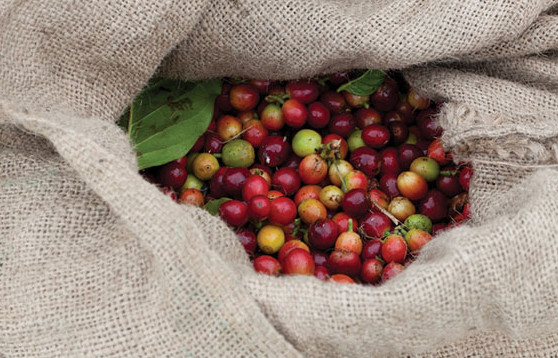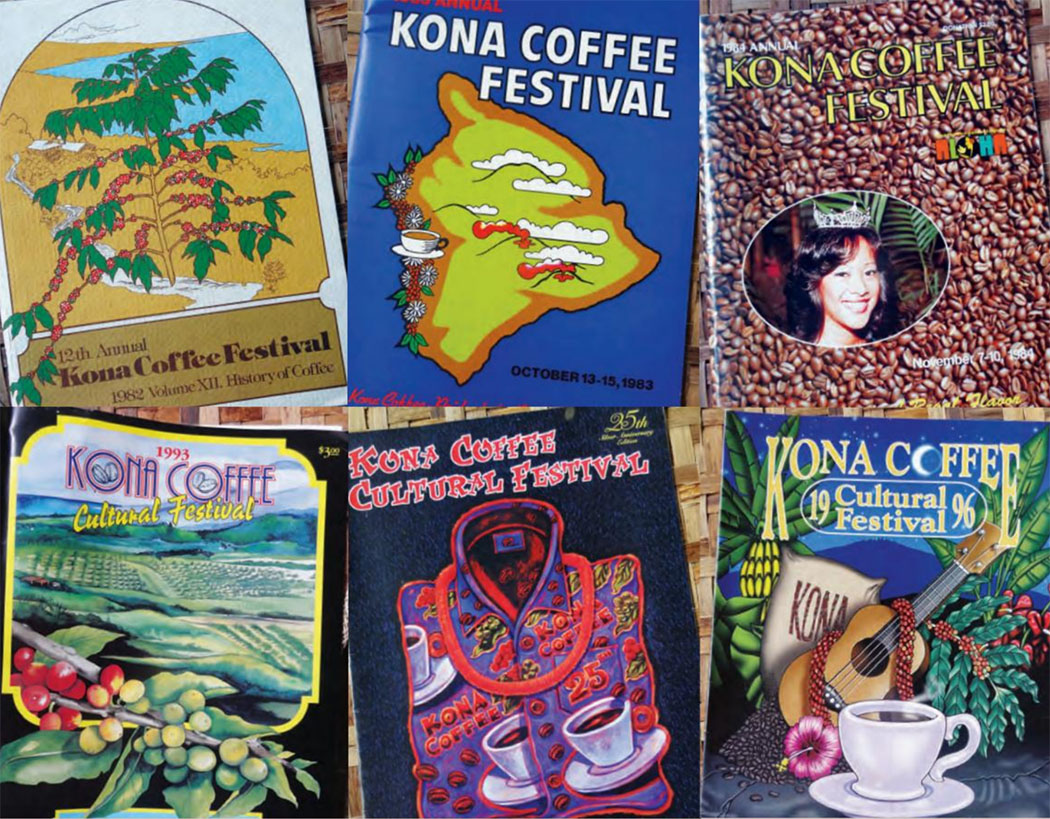
“Beetle Juice” Inoculates Kona Coffee Against Coffee Beetle Borer
 By Margaret Kearns
By Margaret Kearns
Greenwell is a name synonymous with Kona coffee in Hawai‘i with patriarch Henry Nicholas Greenwell lauded as the marketing genius who put the region’s highly-sought brew on connoisseurs’ radar worldwide more than 150 years ago. Greenwell, a native of England and would-be sheep farmer, left home in the 1840s in search of a sheep station in Australia. By 1850, however, he found himself standing on the fertile, volcanic soil of rural Kona after a circuitous, eventful route via Australia, California, and O‘ahu. It was the beginning of the Greenwell Farms coffee growing and cattle ranching legacy here on Hawai‘i Island which, at one time, encompassed tens of thousands of acres stretching from Honokōhau south to Kealakekua—the heart of the island’s Kona coffee district.
Today, the family continues to farm 35 acres of coffee adjacent to the original homestead (now the Kona Historical Society Museum) together with 40 acres of their original coffee farm holdings located above Konawaena High School. Managed by Henry’s great-grandson Tom Greenwell, and Tom’s brother-in-law Steve Hicks, the estate property “…includes trees more than 100-years-old that were planted by my Great Grandmother Elizabeth in 1903,” Tom Greenwell says.
Encompassing an area 20 miles long and two miles wide on the slopes of Hualālai and Mauna Loa, the Kona district has produced coffee continuously for more than 200 years. Now 600 independent farms, averaging just three acres in size, cultivate the bean that commands prices that are among the highest in the world, according to records from the Kona Farmers Association. And while it is indisputably the most acclaimed growing area in the state, it is just one of many coffee producing regions in Hawai‘i that contribute to a $30 million per year industry.
On the flip-side, Kona is also the region currently threatening the physical and economic health of Hawai‘i’s coffee industry, according to Greenwell, who is also immediate past president of the Hawai‘i Coffee Association.
“Up until 2010, Hawai‘i was just one of two coffee producing regions in the world not affected by the Coffee Borer Beetle—the most destructive of all coffee farm pests. In September 2010 that changed. The beetle was positively identified on farms in Kona,” he says.
For 150 years, growing coffee here has been relatively easy compared to other areas of world, he says. “We’re blessed with ideal conditions—ideal soil, weather, and elevation among them. That’s not to say we haven’t had our share of challenges over the years: drought, other pests, and high labor costs—although nothing is as potentially dangerous as this,” Greenwell says.
Farms across the region have seen crop yields diminish by up to 50 percent over the past two years, he says, with the average loss in the 25 to 30 percent range. “I’m trying to be optimistic about the current crop levels, and I really don’t think the numbers will improve substantially in 2012.”
His measures are based on industry statistics as well as what he is personally seeing on the more than 300 farms his mill purchases beans from each year for the production of Greenwell Farms coffee.
Exactly when and how this dreaded beetle arrived in Kona is a “big question mark,” he says, adding, “There are 101 ways it could have gotten here, no one knows for sure. What’s important now is containing the infestation and eventually eliminating it entirely.”
To do that, he encourages farmers to adopt Integrated Pest Management techniques which have proven to be most successful in combating the pest in other coffee growing regions worldwide. It begins with the basics:
- Educating workers about the pest
- Developing and implementing strategies to control and eliminate the beetle that are most effective on each individual farm
- Stripping and cleaning the trees of all un-picked beans
- Removing all discarded beans littering the orchards’ ground
- Spraying the trees with Beauveria Bassiana, a natural insecticide highly regulated by the EPA, in the appropriate season when female beetles are most vulnerable (the beetles are “homeless” during blossoming when their host, the coffee bean, has not yet formed)
- Removing trees that are no longer being farmed
Owners of vacant property with feral coffee trees growing on it also need to be respectful of their neighbors, Greenwell says. “If those beans are not picked or are not cleaned up off of the ground, they will harbor the Coffee Borer Beetle. Even with our usually light breezes, these beetles can be easily blown onto neighboring, operating farms,” he says.
With more and more educational programs now being presented by individual mills, Hawai‘i coffee associations and state government entities, Greenwell says, things are beginning to improve as area farmers determine the methods most effective for their properties and vigorously implement them. “In addition, we recently received a grant from the United States Department of Agriculture and the State Department of Agriculture to assist us with research, infestation tracking, and elimination efforts on a large track of land in South Kona that contains hundreds of coffee farms,” he says.
And new “weapons” are constantly emerging.
About a year ago, a local company, Symbiotic Solutions, headed by President Anita Mitchell, developed a concoction based on a naturally occurring fungus found right here on Hawai‘i Island. Brewed by consultant and inventor, Gaillen Wraye, the Coffee Borer Beetle Solution (affectionately known as “Beetle Juice” by some 50 farmers currently using it) is sprayed on the trees even though it is not a topical insecticide. Rather, it enters the trees’ systemic systems, inoculating them against the beetle, preventing the female from successful “nesting” in the bean.
Wraye’s work focuses on strengthening the immune system of plants with naturally existing micro-organisms to prevent crop damage, and to preserve healthy, balanced ecosystems. “This method of interacting with the plants and their environments was formulated after years of observing the relationships of micro-organisms and their host partners,” he says. He spent 25 years as a Natural Resource Manager for the government of British Columbia, Canada.
Exactly what are the ingredients in this “Beetle Juice”? According to Wraye, the solution is comprised of water, molasses, proprietary organic ingredients, and plant-friendly micro-organisms. “It’s function,” he says, “is two-fold. First, it establishes bacteria colonies that assist resident coffee fungus to facilitate a change in the tree so it no longer attracts the beetle. These colonies then work in a symbiotic fashion within the tree, changing the internal environment of the cherry so it’s inhospitable to the beetle and larvae.
“We have had prior previous success with a solution using the same concept to eliminate mosquitoes on local farms,” Wraye says. “I was actually approached by a group of those farmers, asking if I could come up with something similar to fight the Coffee Borer Beetle … and so I did. And we’re seeing positive results!”
Letters from satisfied customers:
We had cut back our 700-plus coffee trees because of the CBB Beetle. We knew Gaillen of Symbiotic Solutions and agreed to do a controlled testing of the ‘Beetle Juice.’
We were interested in testing the solution as it is nontoxic and works with the trees’ internal defensive systems. It was easy to apply under the leaves with a backpack sprayer, and because it’s all natural, we did not have to dress up in haz-mat suits. The solution is absorbed and distributed systemically, and the bacteria cultures are transported to the coffee cherry. We like this internal system as rain does not wash it off and humidity conditions do not change its viability. This works even if the neighbors aren’t spraying their coffee.
One third of our trees were sprayed twice, two months apart, one third was sprayed once, and one third was not treated. After our first picking of each group we pulped the cherry and weighed the beans. We floated the bad beans in water and weighed them to determine a percentage. These preliminary results are very encouraging. The initial losses in bad beans were 25% for the untreated trees, 16% for those sprayed just once, and only 4% for the trees that were sprayed twice! We are awaiting further assessment of the dried coffee for final results. We are very excited with our results and plan to continue using CBB Solution!
~ Stephanie Schreiber, Aloha Farms
Our coffee farm has used “Beetle Juice” for two applications. We appreciate Gallien’s hands-on help, as he personally looked at our trees then gave recommendations. Even though the solution is still in the experimental stage, the wet milling report on our first round shows there is less damage from the beetles than last year. We look forward to when our trees are fully resistant to the Coffee Beetle Borer.
~ Kay Dixon, Sugai Kona Coffee
I was looking for a better solution than the countless traps and monthly spraying of Botanigard. In early July I came across the Symbiotic Solution and decided to try it out.
The first harvest had a 10% bug rate, due to infected beans prior to spraying. This time I am not seeing any bugs in the ripe cherry or green beans on the trees, and the traps are all but empty.
Over the last year I also had a problem with another beetle attacking a number of Tahitian lime trees on the property. Commercial products, extensive pruning, and sealing of the damaged branches did not work. With nothing to lose, I decided to spray my lime trees with the Symbiotic Solution. Within a week I noticed new growth from previously dead branches and no further damage.
~ Murray Taylor
With the solution’s success to date, Wraye hopes many more farms will incorporate the solution as part of their Integrated Pest Management plan, further encouraging symbiotic and earth-friendly solutions for other problems facing Hawai‘i’s agriculture industry. ❖
For more information on the Coffee Borer Beetle Solution: SymbioticSolutions.biz.
For more information on the Coffee Borer Beetle in Hawai‘i: KonaFarmersAssociation.com, HawaiiCoffeeAssociation.com
Contact writer Margaret Kearns: margaretekearns@gmail.com


